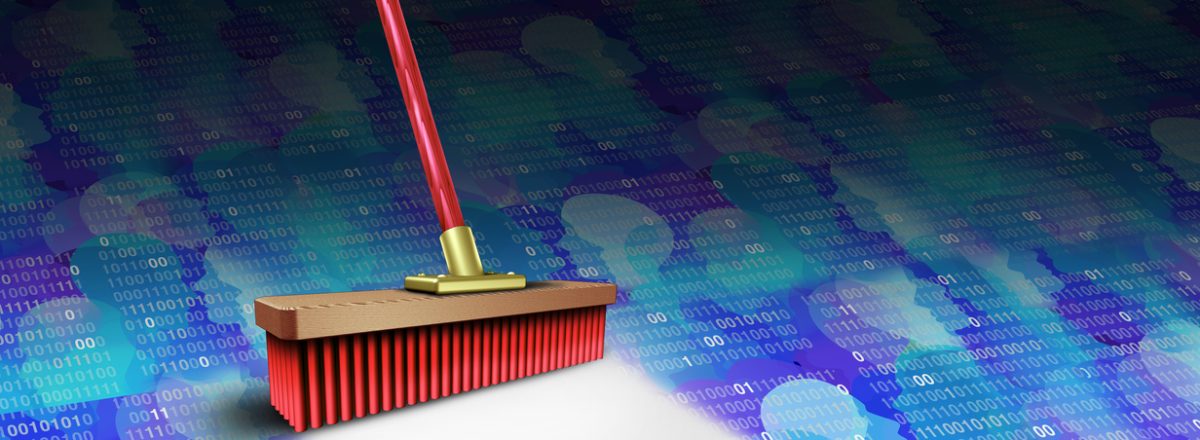Clean Data?


Although retirement plan sponsors typically outsource plan administration, they remain ultimately responsible for the plan’s success, and that means plan data must be accurate and up-to-date. Of course, plan data must also be protected from cyber threats. Here are practical reminders and tips to follow.
Quality Data Drives Plan Success
The availability of current and error free plan data should consistently be a concern of plan sponsors. The reasons are many. For starters, the Department of Labor reminds us that in accordance with ERISA, those required to file or certify reports must ensure the information included in them is “verified, explained, or clarified, and checked for accuracy and completeness.” One obvious example of a report that requires accurate data, annually, is Form 5500. Accordingly, ERISA law experts caution: “Form 5500 is filed under penalty of perjury, which means that anyone signing should, at a minimum, review the form at a high level to be sure that nothing in the form is obviously inaccurate.”
Another fiduciary imperative for plan sponsors is regular benchmarking, and for benchmarking to be effective, plan data must be accurate:
Clean data provides a context for benchmarking metrics, including:
- Assessing the scope of services being provided to the plan
- Evaluating the value being delivered to the plan and participants
- Examining the reasonableness of fees
In the day to day churn of the world of work, it’s easy to lose sight of the seemingly obvious implications stemming from poor data, so it’s wise for plan sponsors to pause and consider these three further examples of why clean data matters:
- It provides a foundation for sound plan recommendations: An auto mechanic typically runs a diagnostic to determine the cause of a customer’s car troubles. Similarly, having access to current, complete plan data enables advisors and other plan service providers to easily pinpoint issues — such as low participation or deferral rates, or poor asset allocation — and make appropriate recommendations to solve them. Those recommendations might include updating the plan design or retooling participant education strategies to improve uptake, for example.
- It saves money: Correcting retirement plan data errors is not only time-consuming, it’s expensive. Clean data eliminates the need for costly corrections.
- It helps reduce risk: Leveraging clean data enables plan service providers to make better-informed decisions that serve the best interests of the plan and participants, thus fulfilling their fiduciary responsibilities and reducing the potential for time-consuming, costly corrections and lawsuits.
Given that outdated and inaccurate data can negatively impact retirement plans–and the businesses and fiduciaries sponsoring them—in a multitude of ways, data hygiene is clearly imperative. To that end, experts at the National Association of Plan Advisors recommend “having a strategy for making sure data is ‘clean,’ and suggest “for an administrator to perform a data clean-up for a plan sponsor,” underscoring “that an independent review by an unbiased actuary can help ensure that the plan will be healthy and well-run, and that good decisions will be made concerning it.”
Don’t Forget Cybersecurity…
Obviously, retirement plan data must be protected as well as clean. In fact, recently, Lisa Gomez, the Assistant Secretary of the Employee Benefits Security Administration,
affirmed the importance of cyber liability insurance, and advised plan sponsors to speak with their insurance providers to “make sure you are protected there.” Gomez pointed out, for example, “Many employers assume that since the company has cyber liability insurance, they’d be covered in a breach. The fine print in the policy notes that it applies only to the company and not the company in its capacity as a plan sponsor—something not obvious to most.”
Recognizing the importance of cybersecurity for retirement plans, Colonial Surety Company, offers an efficient, affordable and clear solution. Specifically, for a few dollars a day, plan sponsors can obtain protection for the company, the plan, and themselves, with a Cyber Liability+Fiduciary Liability Insurance package. In addition to providing defense costs and penalty limits up to $1,000,000, if faced with claims of alleged or actual breaches of duty in connection with the employee retirement plan, Colonial’s Cyber Liability+Fiduciary Liability Insurance includes:
- Expert-led response services following a data breach.
- Protection from lawsuits and regulatory actions related to the breach.
- Legal services.
- Computer forensic services.
- Public relations and crisis management expenses.
- Notification services.
- Call Center services.
- Credit and Identity monitoring
Plan sponsors can obtain this comprehensive coverage online in minutes today, or even speak to one of our knowledgeable ERISA experts for further support. Start Here, now:
Cyber and Fiduciary Liability Insurance HERE
Colonial Surety Company is rated “A Excellent” by A.M. Best Company, U.S. Treasury listed and in business all across the country. Serving customers since 1930, we are the trusted source for the pension industry to secure legally required ERISA bonds, fiduciary liability insurance and cyber-liability insurance. We help safeguard plan sponsors, pension professionals and financial advisors — and keep their businesses compliant — with pain-free, efficient, and friendly service every time.

